A few days ago, a colleague asked me to distribute a job announcement from a nearby university. This is a pretty common practice and there are a lot of job searches underway. But this one caught my attention because the position description referred to building “distinctive collections.” I found the phrasing as an attempt to be clever, but more importantly it highlighted an archival challenge—to decide which archival and manuscript collections are the most or least important. Assigning the value of “distinctive” to collections is problematic since all collections are unique in some way and thus distinctive. Perhaps “distinctive” is another way of saying that the origins or provenance of the collection are significant (e.g., an unpublished manuscript that unearthed in J.D. Salinger’s backyard), that the collection is the “crown jewel” for the institution, or perhaps that it was just very expensive.
To me, a distinctive collection is one that has the potential to attract great research interest and can be used by researchers for multiple purposes. It is easy to pursue a collection, either through purchase or as a donation, that you believe has great research value, but it is always unknown whether others, such as colleagues and researchers, will have the same opinion. I spend a large amount of time considering which archival and manuscript collections would be a good fit for Special Collections and University Archives at Virginia Tech. Most days, I spend some amount of time talking or corresponding with potential donors, reviewing dealer catalogs, seeking opinions from others on potential acquisitions, or searching through online auction listings. My goal is to identify collections that support research and the major collecting areas that we highlight in the blog. Working closely with collections once they arrive is not my normal routine, but sometimes I remain involved in organizing and creating access to the material that I helped bring in the doors.
As a recent example, I have spent many hours working with the William S. Newton Papers, 1862-1879, which is one of my favorite acquisitions in the past five years. The story begins in early 2017 when I saw a listing for the collection in an auction catalog. Newton’s story fit well with the department’s collecting areas and researcher groups. The collection includes about 170 letters Newton wrote to his wife and children during the Civil War. The letters document the Civil War experiences of an Ohio surgeon serving in Virginia and West Virginia from 1862-1865. The collection also includes a postwar letter describing his experiences at the Battle of Cloyd’s Mountain, which occurred in Pulaski County, approximately twenty miles from Blacksburg. Newton was assistant surgeon of the 91st Ohio Volunteer Infantry and near the end of the war served as surgeon of the 193rd Ohio Volunteer Infantry.
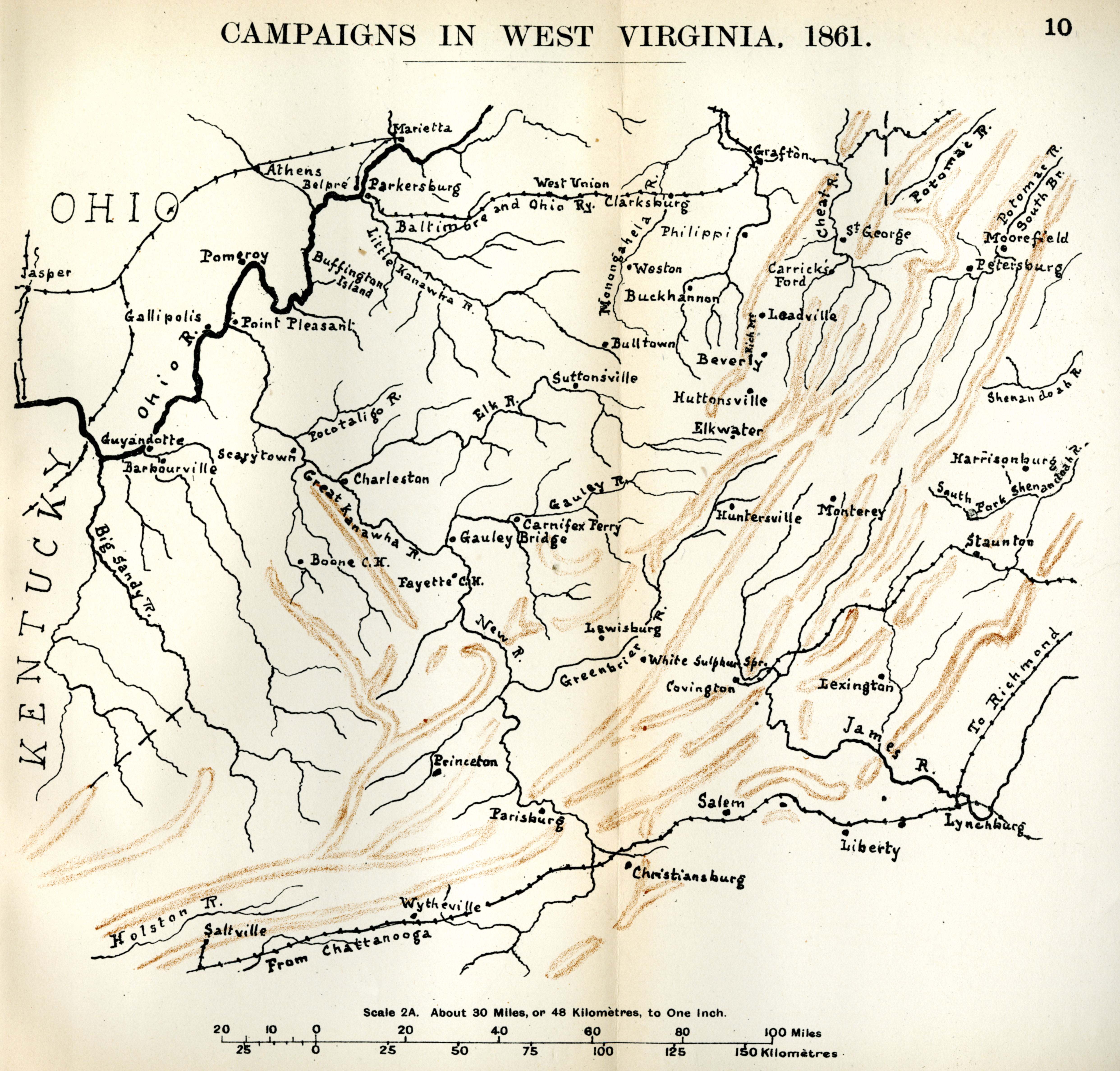
As for some background, William Smith Newton was born on February 6, 1823, near the small town of Harmer, in Washington County, Ohio. The town, now part of Marietta, was located where the Muskingum River flows into the Ohio River, with Virginia (now West Virginia) located on the other side to the south. He was the son of Oren and Elizabeth Fuller Newton. His father, Oren, was an important figure in the community and was involved in farming and the grindstone industry. Like other members of his family, Newton attended Marietta College. He completed his freshman year, 1842-1843, but he did not continue with courses or graduate from Marietta College. Instead, he took an interest in medicine and enrolled as a medical student in fall 1843 at the Medical College of Ohio in Cincinnati. Newton graduated in 1845 from the Medical College of Ohio and returned to Harmar.
In 1845, he married Frances Ann Hayward of Gallipolis and they relocated to Ironton, Ohio several years later. They had seven children during their marriage. Three of their children, Oren Hayward (1846–1858), Lewis Garland (May–October 1848), and Fanny Lillian (1857–1858), died before reaching adulthood. In 1862, when William enlisted in the Union Army, they had three children, Edward (Ned) Seymore (born 1850), Valentine Mott (born 1852), and Kate May (born 1860). Another child, John Beverly (born November 9, 1863), arrived during Newton’s military service.
In the fall of 1862, Newton was appointed assistant surgeon of the 91st Ohio Volunteer Infantry which has just been organized into five companies at Ironton. For the next three years, Newton wrote a steady stream of letters to his wife and children. Those incoming letters were kept together and most likely stayed with the Newton family after the war. At some point, the letters ended up in private hands, most recently with a well-known collector of antique firearms. Sometime in the 1970s, the owner of the collection at that time allowed most of the collection to be microfilmed for use at the Ohio Historical Society in Columbus. Thus, only a handful of researchers who either knew how to contact the owner or were willing to suffer through using microfilm made use of the collection. My search yielded one master’s thesis and a few books on Civil War military history that referred to the William S. Newton Papers. Clearly, access to the collection was limited and it deserved to be in an archival repository. I shared these details with colleagues on campus and in the department and all agreed that the Newton Papers would be a wonderful addition.
On Tuesday, February 21, 2017, I waited on the phone as a live bidder for the Newton Papers to be auctioned. After several bids, we were the successful bidder and a few weeks later the Newton Papers arrived Blacksburg. In the weeks and months that followed, the collection was given a catalog record and put in the backlog for later processing. In the meantime, I shared the news with many potential researchers and invited them to come look at the collection even though it was still unprocessed. In the months that followed I continued to suggest the Newton Papers to graduate students and other Civil War researchers. Surprisingly, I received a very small response and the collection was hardly used.
Despite limited interest from researchers, I was still convinced that Newton deserved more attention. In 2019, I decided to make the Newton Papers a priority. I began working through the included transcripts (which were rife with errors) and in just a few weeks I had become very familiar with the collection. A surprise offer of weekly hours from a graduate student from the history department to help with the transcription work kept the project active. As a potential output for all this work, I had a random conversation with a colleague at the University of Tennessee Press about the collection and they suggested that it would be a great fit for the Voices of the Civil War series. After a lot of consideration and some hesitation, I decided that a book of Newton’s edited letters (not an interpretative work) would be a great way to promote the collection and draw researchers to Civil War collections at Virginia Tech.
I was astonished with the depth of the letters and the range of topics discussed. Newton’s letters focus on many significant topics of the Civil War era—military maneuvers, race relations, politics, medical practices, and life among officers in camp. Newton reported on his work as a surgeon. He managed several hospitals (both in seized buildings and in the field), tended to patients, ordered supplies, arranged for the wounded to return home, and informed families of the loss of a loved one. Newton’s letters mention taking care of soldiers who he knew personally from his medical practice. Although a non-combatant, Newton experienced frequent skirmishes with Confederate raiders and was part of several significant military campaigns. His letters describe significant battles in West Virginia and Virginia, most notably the Second Battle of Kernstown, the Battle of Opequan (Third Battle of Winchester), and the Battle of Cedar Creek. Of note, Newton’s October 8, 1867 letter to Ohio adjutant general Benjamin R. Cowen documents his most harrowing moments during the Civil War—Newton’s capture by Confederates following the Battle of Cloyd’s Mountain in May 1864, his role in operating on wounded Confederate General Albert Gallatin Jenkins, and his brief imprisonment and release from Libby Prison later that month. Other letters describe his working relationships with officers in the 91st Ohio Volunteer Infantry.
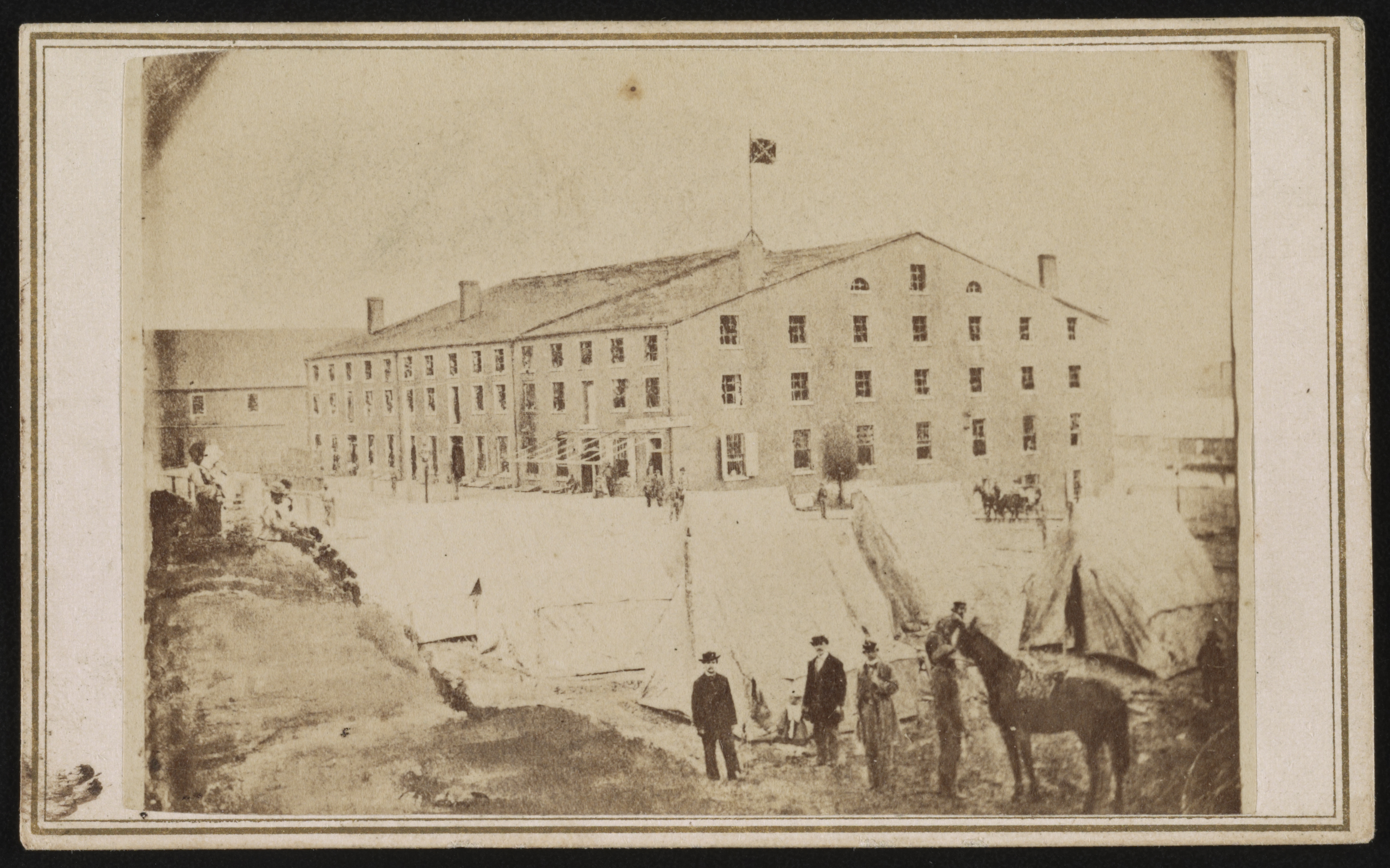
Newton’s letters reveal the close connections between friend and enemy. For example, in October 1863, Newton was given charge of a Union hospital located in Charleston, West Virginia. In an October 10 letter, he explained “Our Hospital is in one of the finest houses of the town, and I am quartered in the parlor with a nice bed, cane bottom chairs & sofas, all belonging to some rebel, but I will take good care of them, and see they are not abused.” Two days later, Newton wrote “Last evening on examining the portraits hanging around the parlor, I discovered one that looked like John Ruby. On going to the book case, I found two or three with John C. Ruby written in full. I then enquired and found that not only his, but that of wife sister-in-law, Mother-inlaw, & Father-in-law, all in very large gilt frames, was this not a discovery.” Ruby was born in Gallia County, Ohio, which may explain why Newton knew him and his family. Newton concluded the letter saying “John Ruby is Quartermaster in 22nd Va. Reb Reg., and I am here living in his house & using his furniture. So the world moves, and such is war.”
The limited status of emancipated slaves in society was another element in Newton’s correspondence. In August 1863, Newton’s letters first mentioned Mary Ann McDonald, a former slave who was emancipated by the Union army following the raid of Wytheville. It is likely that Mary was sent to the hospital for examination and Newton claimed responsibility for her wellbeing. He decided to send Mary to Ironton to assist his wife and family. As part of the plan, Ned and Mott met her in Charleston, West Virginia, and took her back to Ironton. He was concerned that “negro traders” in Charleston might “steal her away from the boys before they get a boat,” but she safely made it to Ironton. Newton explained to his wife that Mary “belongs to you, that your interests are hers.” He suggested that “the boys teach her to read” and possibly write, but Newton made clear that Mary did not have any level of independence. In an August 23 letter he told his wife “You can make, or mold her into anything you desire.” The addition of Mary to the Newton household was not an easy adjustment. The letters were unclear on the details, but rumors about Mary’s trustworthiness circulated through Ironton and found their way back to Newton. The breaking point was the accusation that Mary had stolen personal items from the family. Some of the lost articles were later discovered and had simply been misplaced instead of stolen. Newton’s inquiries confirmed that all accusations against Mary were unfounded. Nonetheless, by October Newton’s wife had lost all trust in Mary and discharged her from service. She was no longer mentioned in their correspondence and there are no existing records to trace what happened to Mary Ann McDonald in the decades that followed. These and other letters make clear the overt racism throughout white society during this period.
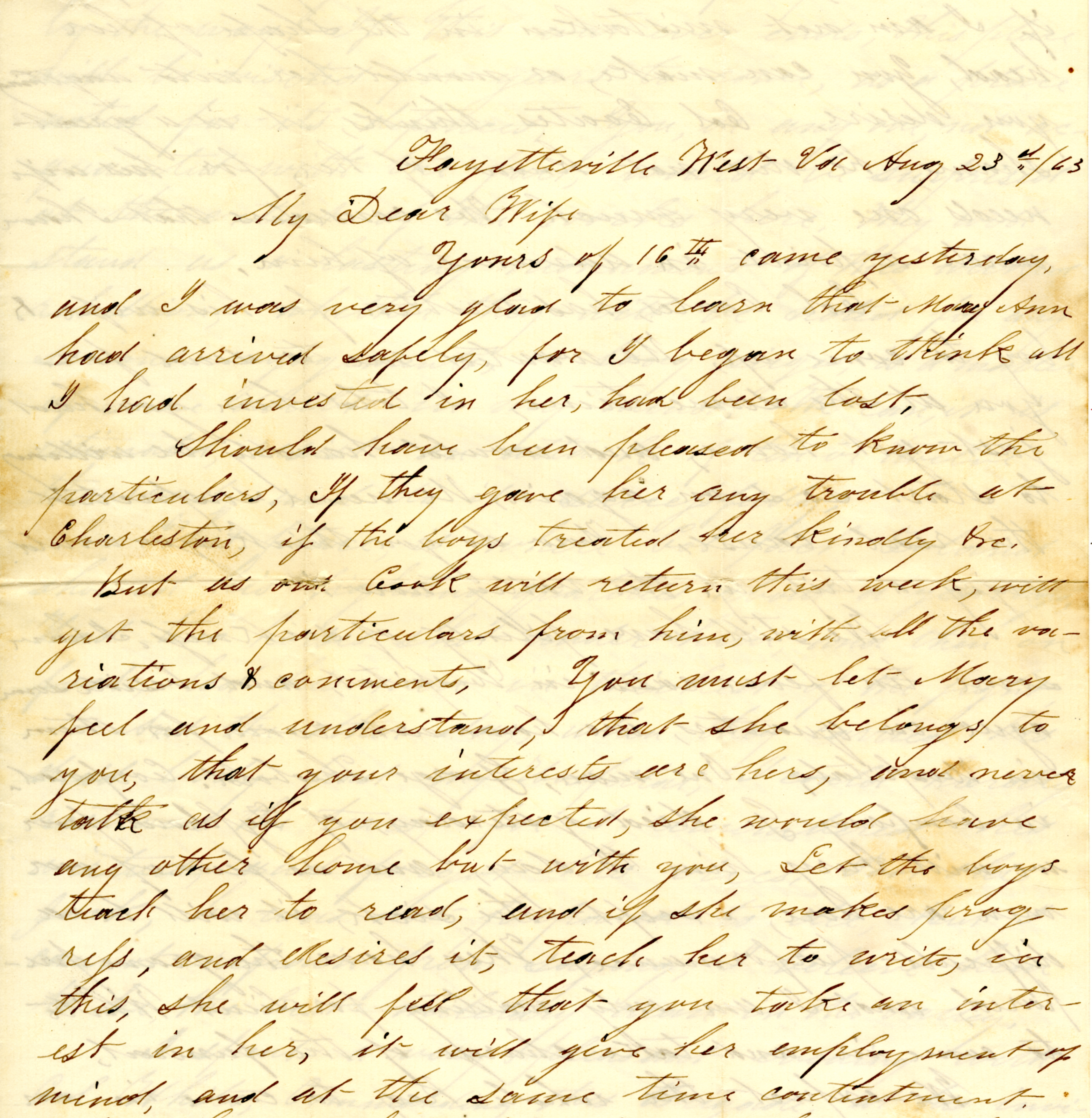
Newton’s letters expressed a deep interest in family affairs. His letters advised on family matters such as buying and selling property back in Ohio, naming his newborn child, advising his teenage son Ned to live an upstanding life, prescribing medicines to remedy illnesses in the family, and preparing a new farm for when he could return home. His letters conveyed a deep sense of loneliness, especially for his wife.
As a possible cure for Newton’s homesickness, two of his children, Ned and Mott, visited him in camp. During the day, while he attended to the sick and wounded, his children would fish in nearby rivers and streams for their evening meal. On July 5, 1863 Newton explained:
Ned hardly has time to accompany me. He is very busy fishing, spends the day catching the little ones for bait, then at night puts out his trot, with 30 or 40 hooks. He wants me to tell you that he caught one on Friday morning weighing ten lbs. The soldiers had a good laugh, for he used one of the boat oars as a club, with which to pound the fish over the head, because it did not hold still. The only wonder is, that he did not knock it loose from the hook. He was alone at the time, and captured five in all.
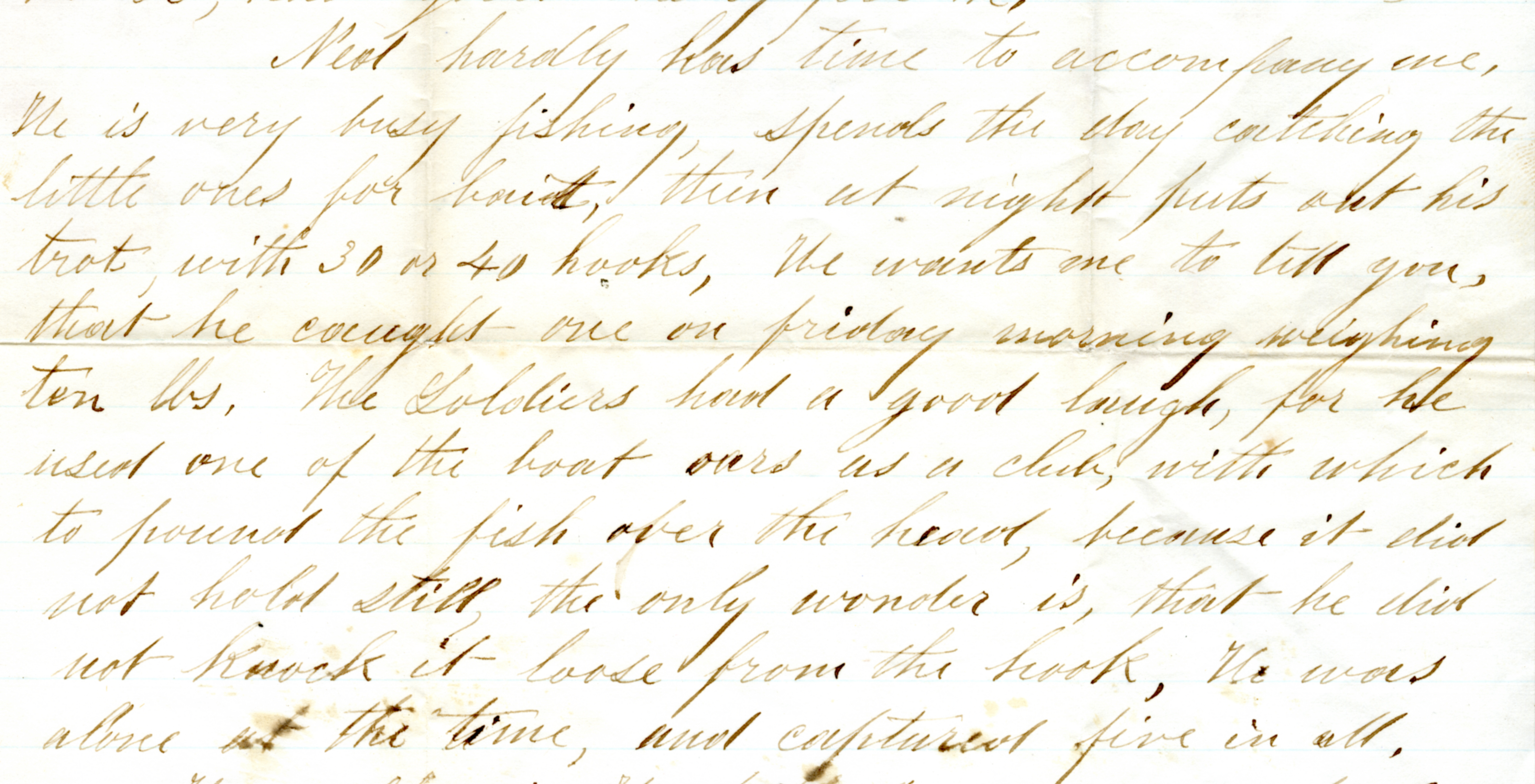
My favorite letters were those written directly to Ned. In a February 24, 1864 letter, Newton scolded Ned for a variety of offenses. He wrote:
What would be your feelings, if a man, should you see another man, a stranger, impose upon your mother; would you not risk your life in resenting the imposition, or insult! If not, you are not of my blood or kindred. Then how much more despicable is he, that would abuse, or offer an insult to his own mother! . . . You certainly are not demented, or crazy, yet how could I suppose a boy almost 14 years of age, could commit such indiscretion. I truly hope no one knows of it.
In addition to disrespecting his mother, Ned was also playing with firearms. In the same letter Newton wrote:
Did you think it would afford me any happiness, to know that you were taking the gun out, contrary to my express command, and have you reflected that if, some accident should take place, how much misery you might cause to your parents & others.
Like any parent would, Newton outlined a remedy to get Ned back on the proper path—penmanship. Newton explained:
Character is said to be exhibited in the penmanship. If yours is the true exhibit of character, how uneven & unbalanced it must be. I fear your energy & resolutions are short lived, and to little purpose. Can you not do better! Will you not try! And before I see you, let me see some specimens of improvement, both in penmanship & character. Your happiness as well as mine depends upon it.
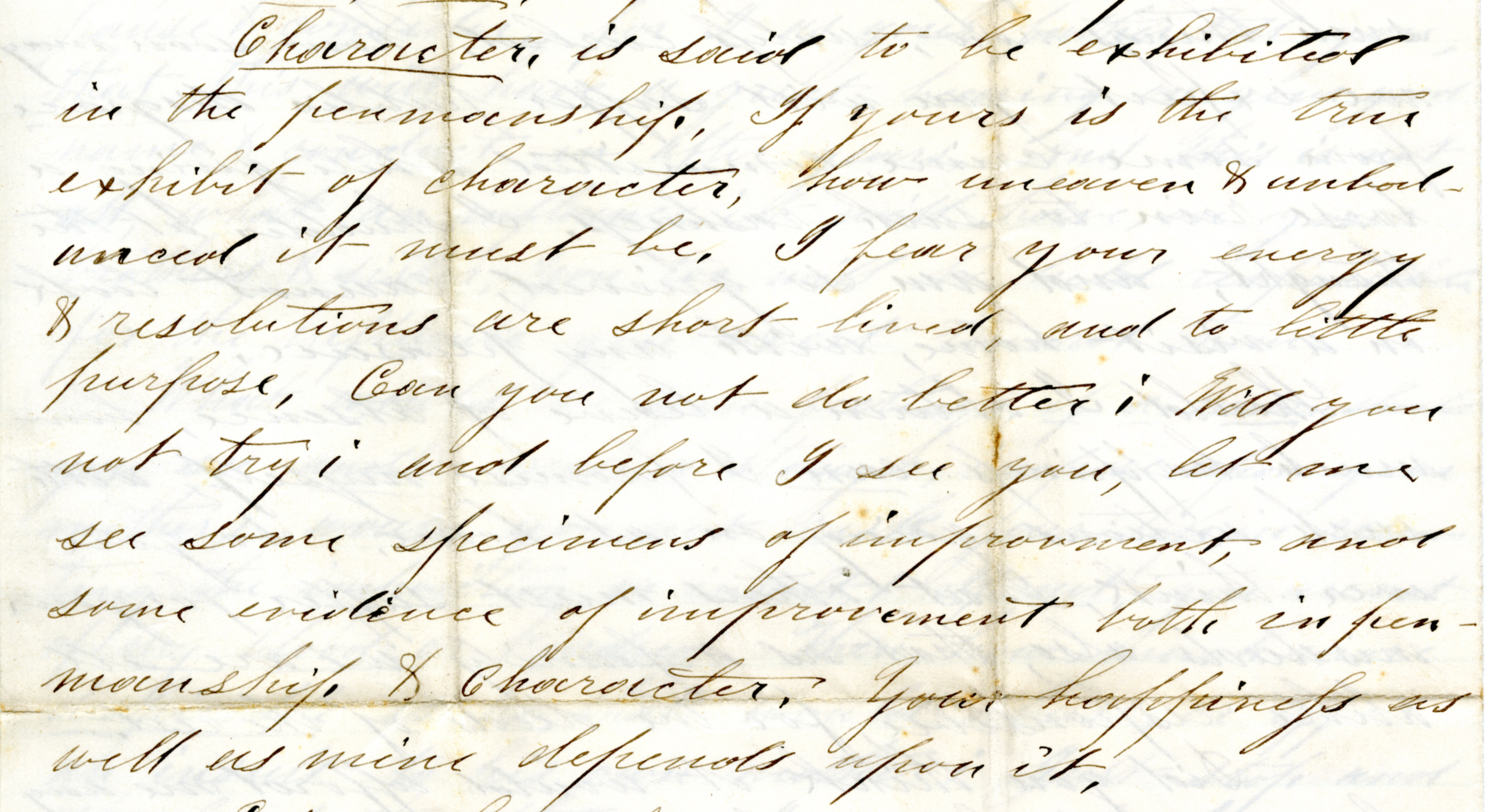
Newton’s later letters, especially those written in 1865, focused on his dreams for the postwar. He purchased a farm in West Union, Ohio from Benjamin F. Coates (colonel in the 91st Ohio Volunteer Infantry) and advised his boys to begin preparing it for the family. There was a clear sense that Newton believed that farming represented an idyllic lifestyle and way to teach his children the value of hard work and patience. He wrote more letters to Ned during this period, and it appears that the teenager was again having behavior problems but took an interest in joining the church. Newton wanted both of his boys to be men of business instead of “town loafers.” Newton’s instructions for growing crops, cleaning fencerows, and tending to a new home were aimed at teaching Ned important life lessons in a more wholesome setting with fewer temptations.
After the war, Newton and family settled in Gallipolis and not in West Union. Newton resumed his medical practice, served as postmaster in Gallipolis, and participated in reunion activities with his former regiment. Included with the collection is a copy of Newton’s pension application. He suffered from several maladies which he attributed to his brief imprisonment at Libby Prison in 1864. Newton died on Saturday, November 18, 1882, just a few months shy of his sixtieth birthday.
Newton’s letters are as much about daily life and society of the 1860s as they are about the military or medical details of the Civil War. The more I followed clues in Newton’s letters the larger the puzzle of people, places, and topics became. I connected with descendants of the Newton family in Ohio and Florida, who were excited to learn more about their ancestors. In the months that followed, which included working remotely because of the COVID-19 pandemic, I continued to work on the project. During the summer of 2021, I finalized the processing and posted the finding aid to the Virginia Heritage database. The book of edited letters was accepted as part of the University of Tennessee Press’s Voices of the Civil War series and is scheduled to be published sometime in the spring of 2022. My involvement with this collection was significant, but the good news is that there is much more for researchers to discover by reading Newton’s letters.
I suppose the Newton Papers count as a distinctive collection for Virginia Tech because they were expensive, expansive in content, and touch on multiple research areas. But, the more I thought about the concept of a “distinctive collection” the more I wanted to avoid the term which sounds like certain collections should be prioritized from the larger whole and treated differently. Instead, the Newton Papers are an excellent addition to the already strong collecting areas of the Civil War in Virginia and Appalachian history at Virginia Tech. In other words, on its own merits the collection is wonderful, but it is even more significant when placed alongside other similar primary sources. As usual, I will be on the lookout for more collections that have such attributes. In the meantime, please come to the first floor of Newman Library and spend some time with the William S. Newton Papers, which are significant, unique, and far more than just distinctive.